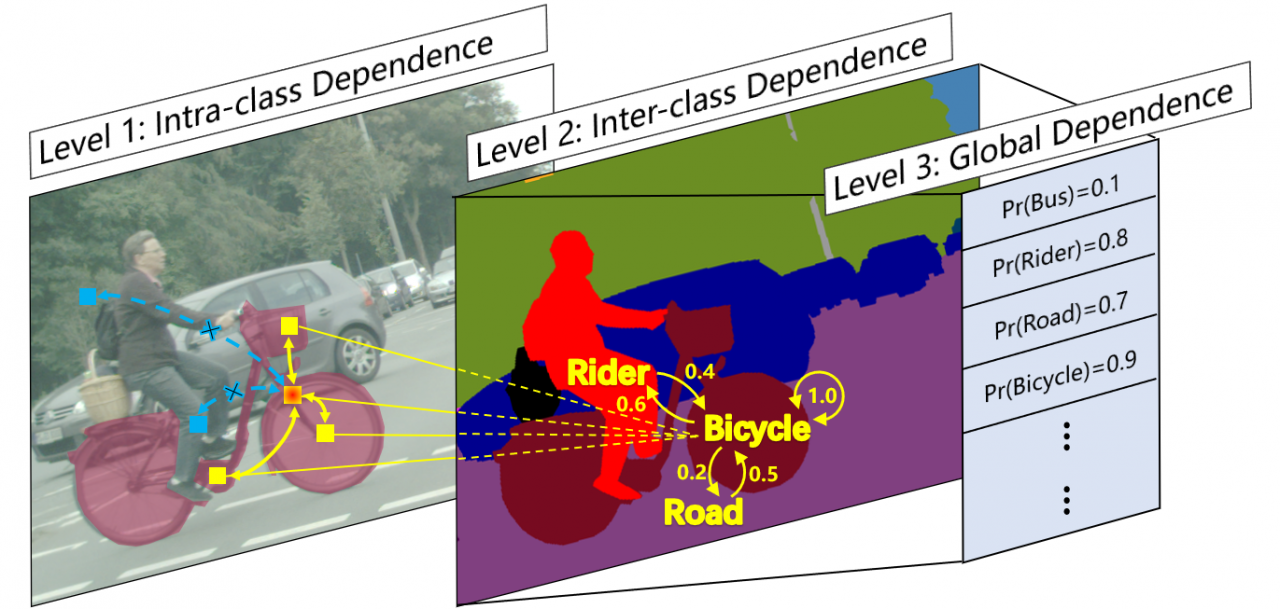|
|
||||||||||||||||||
Exploit Visual Dependency Relations for Semantic Segmentation
Authors: Liu, M., Schonfeld, D., Tang, W.
Publication: In Proceedings of the IEEE/CVF Conference on Computer Vision and Pattern Recognition (CVPR), pp. 9726-9735 URL: https://openaccess.thecvf.com/content/CVPR2021/papers/Liu_Exploit_Visual_Dependency_Relations_for_Semantic_Segmentation_CVPR_2021_paper.pdf Dependency relations among visual entities are ubiquitous because both objects and scenes are highly structured. They provide prior knowledge about the real world that can help improve the generalization ability of deep learning approaches. Different from contextual reasoning which focuses on feature aggregation in the spatial domain, visual dependency reasoning explicitly models the dependency relations among visual entities. In this paper, we introduce a novel network architecture, termed the dependency network or DependencyNet, for semantic segmentation. It unifies dependency reasoning at three semantic levels. Intra-class reasoning decouples the representations of different object categories and updates them separately based on the internal object structures. Inter-class reasoning then performs spatial and semantic reasoning based on the dependency relations among different object categories. We will have an in-depth investigation on how to discover the dependency graph from the training annotations. Global dependency reasoning further refines the representations of each object category based on the global scene information. Extensive ablative studies with a controlled model size and the same network depth show that each individual dependency reasoning component benefits semantic segmentation and they together significantly improve the base network. Experimental results on two benchmark datasets show the DependencyNet achieves comparable performance to the recent states of the art. Funding: The COMPaaS DLV project (NSF award CNS-1828265) Date: June 19, 2021 - June 25, 2021 Document: View PDF |